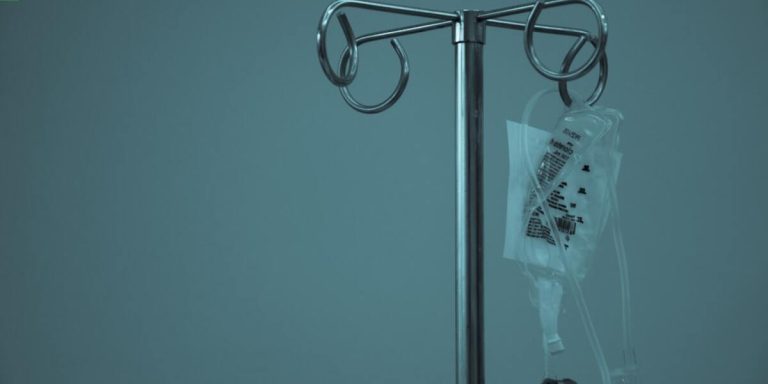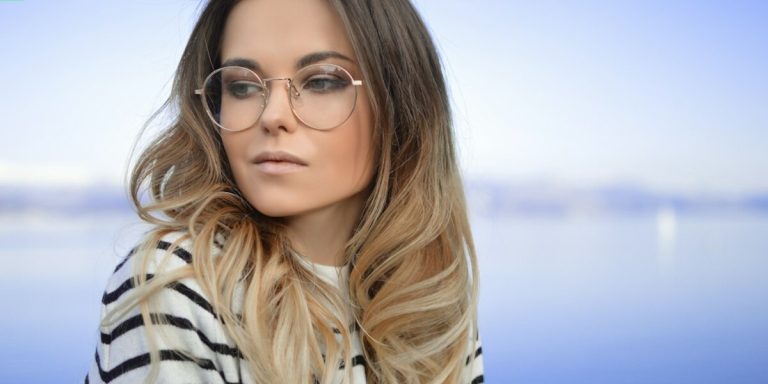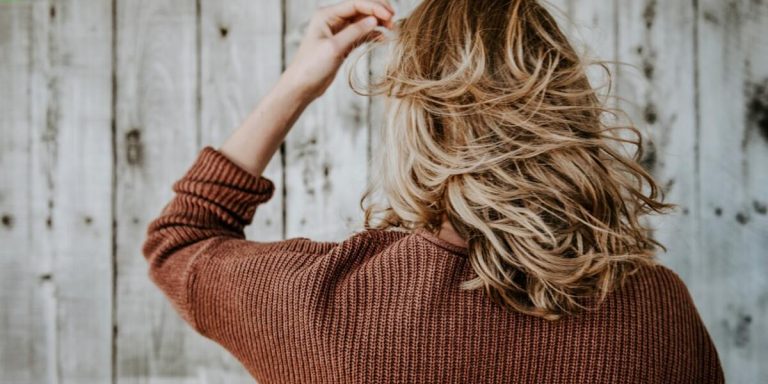Non-Surgical Hair Loss Treatment: A Comprehensive Guide for a Healthy Scalp.
Hair loss can turn into a distressing experience, bringing about self-consciousness and lowered esteem. While surgical procedures like hair transplants are often discussed solutions, not everyone is willing or able to go under the knife. Thankfully, we live in an age where several non-surgical hair loss treatments exist that can help combat this issue effectively.
This comprehensive guide will delve deeper into various aspects of non-surgical hair loss treatment methods. We’ll explore how these techniques work and what you could expect from them – their efficacy rates, potential side effects and more. Whether it’s medications or laser therapy you’re considering; our aim is to provide all the information required to make an informed decision for maintaining a healthy scalp.
Did you know?
Did you know that the non-surgical treatment of microneedling can stimulate hair regrowth by boosting collagen production and increasing blood flow to your scalp?
Understanding Non-Surgical Hair Loss Treatments
With advancements in technology and research, non-surgical hair loss treatments have become both a viable option for those suffering from excessive hair fall. Unlike surgical methods such as follicular unit transplant or extraction that involve extracting individual healthy hairs and implanting them to the bald areas, non-surgical solutions emphasize reducing the speed of thinning hair and stimulating new growth through various techniques.
One popular strategy is using topical ointments like Minoxidil, more commonly known by its brand name Rogaine. This over-the-counter medication works by extending the growth phase of your hair cycle leading to thicker strands overtime. Another approach involves oral medications like Finasteride which reduces DHT levels – an ingredient associated with male pattern baldness.
There are also advanced therapies available including Low-Level Laser Therapy (LLLT), Platelet Rich Plasma therapy (PRP) etc., where LLLT utilizes light energy to stimulate cellular activity promoting thicker healthier looking locks while PRP uses patient’s own blood plasma enriched with platelets which when injected into scalp can encourage faster regrowth.
It’s important though not every treatment works well for everyone; it’s vital you consult a dermatologist or trichology expert before starting any regimen. They will diagnose your condition accurately – whether it’s due to genetics, lifestyle stressors or medical conditions – thus allowing for personalised recommendation based on specific needs ensuring optimal results moving forward providing transformative effects akin 2023!
Types of Topical Treatments for Hair Regrowth
Topical treatments are among the most popular non-surgical hair loss solutions available in 2023. Offering a less invasive approach, these remedies can be applied directly onto your scalp to stimulate regrowth and prevent further hair fall.
Finasteride is another effective solution that works by inhibiting DHT (dihydrotestosterone), a hormone known for causing male pattern baldness when produced excessively. Used topically under brand names like Propecia and Proscar, it’s proven successful especially against receding hairlines or thinning crowns.
Additionally there’s Spironolactone cream often used off-label for treating women with hirsutism but found useful preventing further progression of male pattern baldness due its anti-androgen properties.
The Role of Laser Therapy in Combatting Hair Thinning
In recent years, laser therapy has emerged as a promising non-surgical hair loss treatment. The continual advancements in this area have made it increasingly popular among individuals seeking solutions for thinning hair or pattern baldness.
Laser treatments work by utilizing low levels of light to stimulate follicle activity on the scalp. This process, also known as photobiomodulation, seeks to encourage cell growth and extend the life cycle of existing hairs.
One benefit lies in its methodological approach – being non-invasive and pain-free compared to more traditional procedures like transplant surgery. Those with busy lives often find that integrating these sessions into their schedule is relatively easy due their quick duration.
Moreover, while results vary from person-to-person based on factors such as age and extent of hair loss; several clinical studies demonstrate consistent positive outcomes when used correctly over time. It’s important however not just rely entirely upon statistics but establish realistic expectations through consultation with your dermatologist before embarking on any form of therapy program tailored towards combating receding lines.
You might wonder which devices we recommend. The home market offers a variety of options, including:
- Handheld combs and brushes for self-administration
- Helmet-like caps that cover larger areas
- Therapeutic bandanas with advanced technology in stylish headwear
Ensure you choose an FDA-approved gadget for safety standards. Certified medical professionals usually favor these over generic versions sold online, as they tend to be more effective than professional-grade machines in clinics around the world.
Comparing Efficacy: Non-Surgical Solutions vs. Surgical Procedures
With the advancements in medical science, there is a plethora of hair loss treatments available today. Among these options are surgical procedures and non-surgical solutions. It’s crucial to note that while both treatment types strive towards a similar goal – restoring lost hair – their respective efficacy rates may significantly differ.
Non-surgical solutions for hair loss have been gaining momentum recently due to their less invasive nature as compared with surgical procedures like transplants or grafts. These include treatments such as Low-Level Light Therapy (LLLT), Platelet-Rich Plasma (PRP) therapy, and over-the-counter topical ointments containing Minoxidil or Finasteride.
Low-Level Light Therapy uses laser technology to stimulate blood flow into the scalp area, which can promote new hair growth without any incisions involved. PRP therapy leverages your body’s natural healing mechanisms by injecting platelets from your own blood directly into the scalp for regenerating damaged follicles and encouraging healthy growth patterns.
Over-the-counter topicals penetrate skin layers efficiently delivering active ingredients at ground zero of the problem- our scalps!
Compared to invasive surgeries requiring hospital stays, anesthetic use, possible scarring issues plus recovery downtime; Non-Surgical Solutions seem more consumer-friendly because they typically do not cause significant inconvenience or discomfort during application processes nor do they mandate substantial lifestyle adjustments post-treatment.
Analyzing the Success Rates of PRP Injections for Alopecia
Platelet-Rich Plasma (PRP) injections have been a frontrunner in non-surgical hair loss treatments over the years. PRP extracts growth factors from your blood that stimulates natural follicle regrowth, leading to an increased density of hair and overall improved scalp health.
Initially, many hailed this treatment as revolutionary due to its promising preliminary results. However, on further analysis of several research studies undertaken till now in 2023; some interesting insights emerge about its efficacy rates when compared with surgical procedures such as Hair Transplant surgery.
In one study conducted by researchers at Stanford University involving both male and female participants suffering from alopecia showed noticeable improvement within three months of being treated with PRP Injections. As for longer-term outcomes – 80% reported satisfactory results even after a year which indicates high success and satisfaction rate among users who opted for this method over surgical ones.
Yet another survey administered online assessed patients’ subjective experiences post-treatment. The majority found their experience favorable while comparing it against more invasive methods like FUT or FUE transplants often associated with side effects ranging from pain to scarring or infection risk. Thus reflecting positive sentiments towards non-invasive alternatives reducing patient anxiety surrounding these interventions drastically.
The Pros and Cons of Finasteride and Minoxidil as Treatment Options
Finasteride and Minoxidil are two of the most popular non-surgical hair loss treatments available on the market today. They both offer potential solutions for those suffering from thinning hair or baldness, but each comes with its own set of advantages and disadvantages.
Starting with Finasteride, one of the biggest pros is that it’s been clinically proven to stimulate new hair growth in approximately 66% of men who take it regularly. In contrast to surgical procedures which often come at a steep cost, this FDA-approved oral medication provides an affordable alternative for many individuals.
On another note, side effects may be a concern when considering Finasteride as a treatment option. Reported side effects include reduced libido and sexual function issues; while these aren’t common occurrences (less than 2% reported), they’re worth noting nonetheless.
Moving onto Minoxidil – known commonly by brand name Rogaine – this topical solution boasts easy application and availability over-the-counter without prescription. It’s hailed for enhancing blood flow to follicles promoting thickening & regrowth in about half users within six months use according to studies conducted up until now (2023).
Incorporating Holistic Approaches to Prevent Hair Loss
Embracing a holistic approach to hair loss prevention is becoming increasingly popular in 2023 as individuals are seeking non-surgical alternatives. There’s an undeniable appeal to healing and regenerating the body using natural means, and this extends into our pursuit for fuller, healthier hair. From nutritional changes to alterations in lifestyle habits, such multifaceted strategies can effectively halt or even reverse patterns of balding.
Mindful nutrition, emphasizing foods rich in vitamins A, C, and E as well as proteins to support follicle strength and scalp health, is a crucial element of this method. Balanced diets enable your body’s natural ability for self-regeneration, including your hair. Additionally, incorporating stress-reduction activities like meditation, yoga, or other forms of exercise helps balance hormone levels and control unwarranted shedding.
The world of herbs offers another treasure chest of resources when it comes anti-hair-loss armamentarium; botanical extracts from fenugreek seeds or saw palmetto have shown promising results promoting thicker growth without invasive surgical interventions. So before you consider drastic measures remember nature provides potent remedies against thinning manes nurturing them back towards their original lustrous glory all just by embracing a more wholesome way living.
Nutritional Supplements and Their Impact on Scalp Health
Nutritional supplements play a pivotal role in maintaining scalp health, which is integral to preventing hair loss. When it comes to non surgical hair loss treatment strategies for 2023, the incorporation of specific nutrients into your daily regime can’t be overlooked.
Firstly, Biotin or Vitamin B7 often takes center stage as one of the most crucial elements for robust and healthy hair growth. It aids cell regeneration and boosts keratin production -the building block of our tresses that gives them their structure.
Omega-3 fatty acids are another supplement with significant benefits on scalp health. They possess anti-inflammatory properties that soothe any irritated skin conditions while promoting follicular growth by improving blood flow to the scalp area.
Incorporating Collagen, a protein known primarily for its impact on skin elasticity but similarly crucial when considering overall strand strength and vitality within normal human biology could be beneficial too.
It’s important not just what you consume but making sure these nutrients get absorbed properly– so do consider including Zinc supplements; they bolster good metabolism levels enhancing absorption rates besides their own direct contributions towards warding off issues like thinning locks.
Managing Stress as a Factor in Reducing Hair Fall
Living in a world that moves at lightning speed, stress has become a commonplace and unavoidable aspect of our daily lives. This constant pressure not only wreaks havoc on our mental health but also manifests physically – one such manifestation is hair loss.
Stress-induced hair fall is increasingly prevalent, and managing stress is an integral part of any non-surgical hair loss treatment plan. Consider these holistic methods:
1. Practice Mindfulness: Take time out each day for mindfulness practices like meditation or yoga. These activities help calm your mind and body by lowering cortisol levels – high levels of which can trigger excessive hair shedding.
2. Balanced Diet: Nutritious food acts as fuel for your body; what you put inside directly affects how it functions externally including growth and maintenance of healthy locks.
3. Regular Exercise: A good workout session increases blood circulation throughout your scalp promoting healthier follicles while simultaneously reducing tension providing double-edged benefit against premature baldness.
4.Herbal Supplements: Incorporate herbal supplements into your diet like Biotin or Saw Palmetto known for their natural properties combating thinning tresses efficiently without side effects harsh chemicals usually bring along.
5.Sleep Hygiene : Establishing regular sleep patterns provide bodies necessary rest period during which repairs itself from damages incurred throughout day preventing unnecessary strain manifesting through symptoms such alopecia (hairfall).
Conclusion
Embracing the journey of non-surgical hair loss treatment can be a transformative experience, not merely physically but mentally too. Remember, your crowning glory might wane temporarily, but with patience and persistence in following these treatments outlined above, you’re on the path to regaining both healthier scalp and self-confidence.
As this chapter concludes remember that understanding is just beginning—there’s an entire world of information waiting for you about “Hair Loss Treatments”. Feel free to browse through our website where more knowledge awaits. We believe that informed choices are always better ones when it comes to maintaining one’s health- including the health of your mane!







